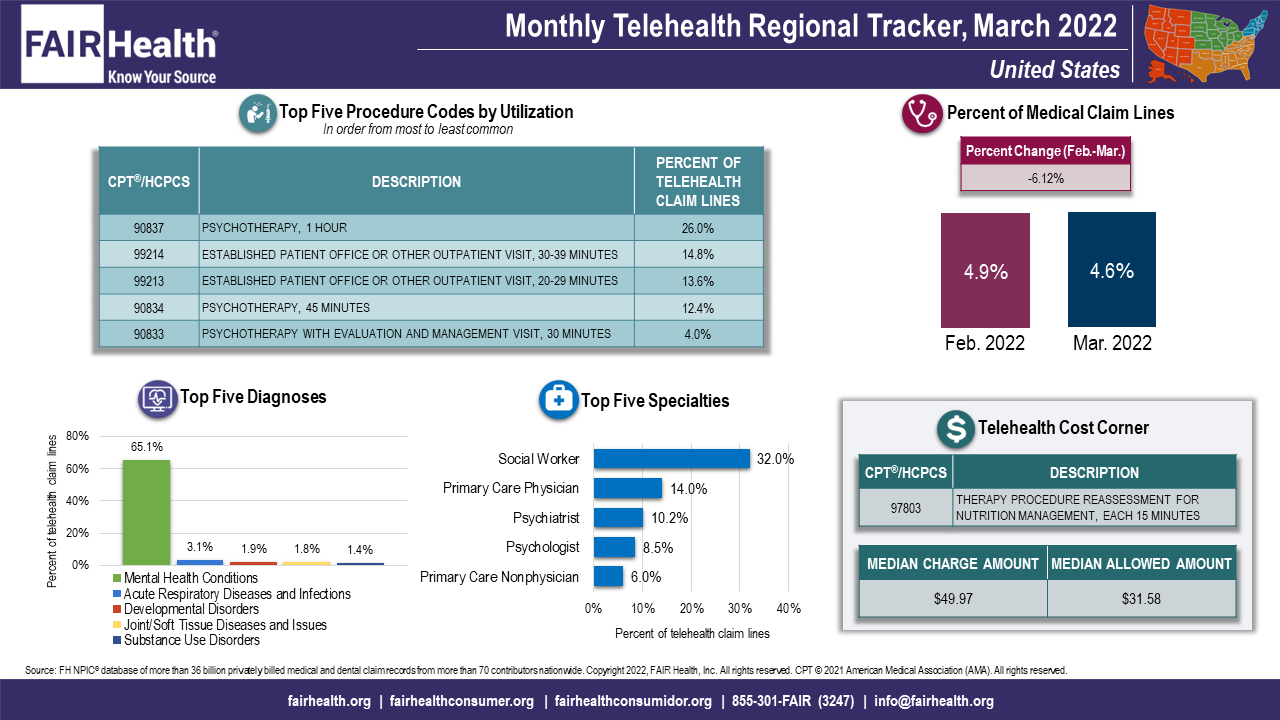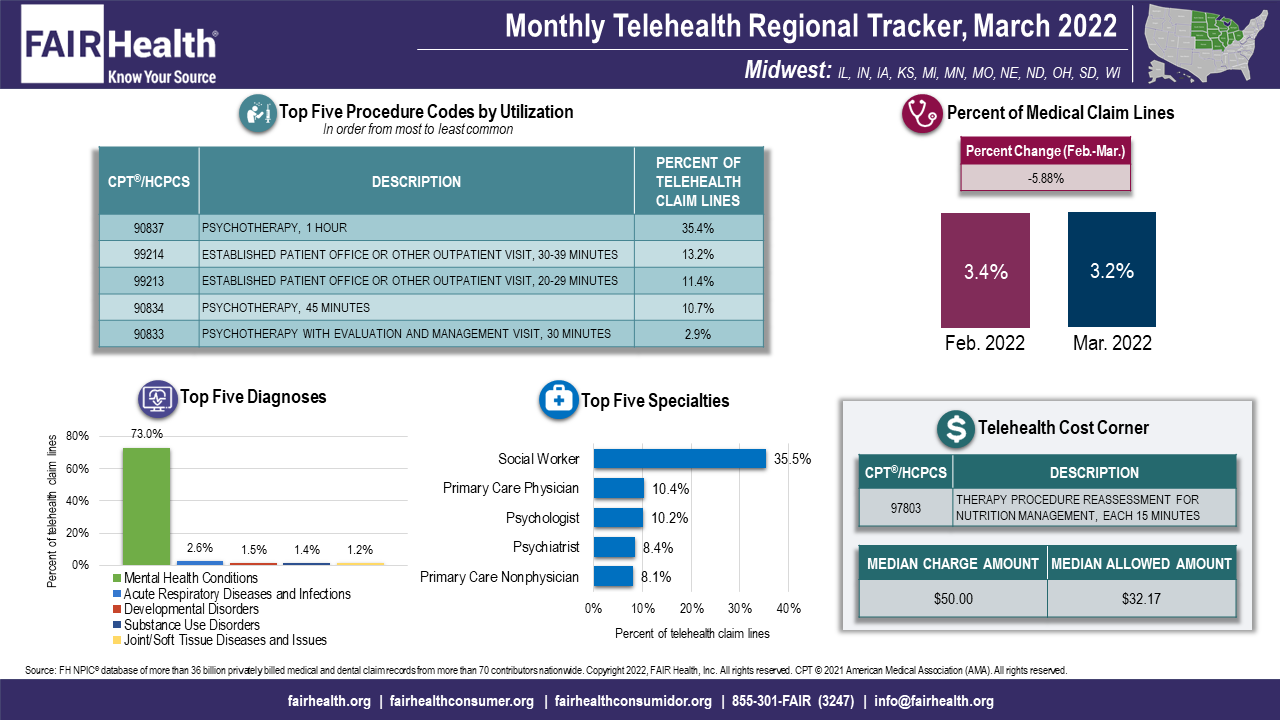- Center on Health Equity & Access
- Clinical
- Health Care Cost
- Health Care Delivery
- Insurance
- Policy
- Technology
- Value-Based Care
Contributor: Telehealth Utilization Continued to Decline Nationally in March 2022
The drop in telehealth utilization was likely due to continuing reduction in the reported number and severity of COVID-19 infections, which may have led more patients to return to in-person healthcare services.
In March 2022, telehealth utilization, as measured by telehealth’s share of all medical claim lines, fell nationally for the second straight month, according to FAIR Health’s Monthly Telehealth Regional Tracker. Following a drop of 9.3 % in February, telehealth utilization decreased 6.1 % in March, declining from 4.9 % of all medical claim lines in February to 4.6 % in March (FIGURE 1). Telehealth utilization also decreased in March in every US census region (Midwest, Northeast, South and West), with the greatest decrease (8.1 %) in the South, followed closely by the West (7.8 %). The data represent the privately insured population, including Medicare Advantage and excluding Medicare Fee-for-Service and Medicaid.
FIGURE 1. Monthly Telehealth Regional Tracker, March 2022, United States
(Source: FAIR Health)

The drop in telehealth utilization was likely due to continuing reduction in the reported number and severity of COVID-19 infections, which may have led more patients to return to in-person healthcare services. Data published by the Centers for Disease Control and Prevention show that the number of reported cases of COVID-19 continued to fall in March.
Diagnoses
The rankings of the top 5 telehealth diagnoses did not change nationally in March 2022, but there were some changes at the regional level. In the Northeast, acute respiratory diseases and infections rose from fifth place to second place in the rankings. In the South, encounter for examination fell off the list and urinary tract infections rejoined the list (in fifth place) for the first time since December 2021. In all regions and nationally, mental health conditions remained the top-ranking telehealth diagnosis.
Specialties
The rankings of the top 5 telehealth specialties did not change nationally or in most regions in March 2022. But in the Midwest, psychiatrist and primary care nonphysician switched places, with the former rising to fourth place in March and the latter dropping to fifth place (FIGURE 2). In all regions and nationally, for the second month in a row, social worker remained the top-ranking telehealth specialty.
FIGURE 2. Monthly Telehealth Regional Tracker, March 2022, Midwest
(Source: FAIR Health)

Procedure Codes
In March 2022, the rankings of the top 5 telehealth procedure codes did not change nationally or in any region. The number one telehealth procedure code nationally and in every region remained CPT®[1] 90837, one-hour psychotherapy.
Costs
For March 2022, the Telehealth Cost Corner spotlighted the cost of CPT 97803, therapy procedure reassessment for nutrition management, each 15 minutes. Nationally, the median charge amount for this service when rendered via telehealth was $49.97, and the median allowed amount was $31.58.
About the Monthly Telehealth Regional Tracker
Launched in May 2020 as a free service, the Monthly Telehealth Regional Tracker uses FAIR Health data to track how telehealth is evolving from month to month. An interactive map of the four US census regions allows the user to view an infographic on telehealth in a specific month in the nation as a whole or in individual regions. Each infographic shows month-to-month changes in telehealth’s %age of medical claim lines, as well as that month’s top 5 telehealth procedure codes, diagnoses and specialties. Additionally, in the Telehealth Cost Corner, a specific telehealth procedure code is featured, with its median charge amount and median allowed amount.
